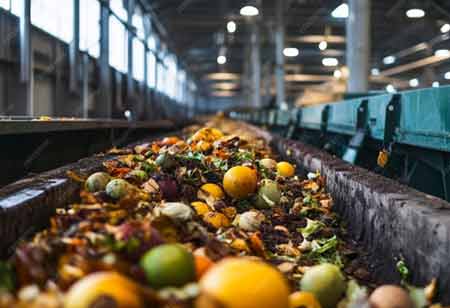THANK YOU FOR SUBSCRIBING
Be first to read the latest tech news, Industry Leader's Insights, and CIO interviews of medium and large enterprises exclusively from Food and Beverage Tech Review
How Circular Systems are Tackling Food Waste
At the heart of the circular food chain is the idea of ‘closing the loop.’
 (1)-450x308_1dmD.jpg)
By
Food and Beverages Tech Review | Wednesday, January 29, 2025
Stay ahead of the industry with exclusive feature stories on the top companies, expert insights and the latest news delivered straight to your inbox. Subscribe today.
Adopting a circular food system reduces waste and maximizes resource efficiency. Many organizations are taking initiatives and looking for ways to reduce waste to address climate change and food insecurity through innovation and policy support.
Fremont, CA: At the heart of the circular food chain is the idea of ‘closing the loop.’ This means rethinking how we approach food production. Today’s linear method of food production—where resources are extracted, used and discarded—has left a trail of environmental degradation and inefficiency. With global food demand projected to soar, experts are championing a circular food system as the blueprint for a sustainable future.
Rethinking Food Production
A circular food system aims to minimize waste and maximize the efficiency of resources throughout the entire food value chain. Unlike the traditional model, this approach ‘closes the loop’ by reusing, recycling and repurposing materials at every stage—from farm to fork. The result? Reduced greenhouse gas emissions, improved food security and resilient supply chains that benefit economies and the planet alike.
According to the Food and Agriculture Organization (FAO), adopting circular practices can address multiple challenges simultaneously. For example, organic waste can be transformed into compost or bioenergy, reducing dependency on synthetic fertilizers and fossil fuels.
Innovating with Circular Solutions
The FAO’s BioDAF project offers a compelling example of circularity in action. Located in Armenia, the initiative trains farmers to use black soldier fly larvae to consume organic waste. The larvae, once processed, become a protein-rich animal feed, while their byproduct serves as an organic fertilizer.
This type of innovation doesn’t stop at the farm. Food processors and businesses are exploring upcycling as a way to reduce waste while creating new revenue streams. Companies are crafting products like soups, jams and milk alternatives from surplus fruits and vegetables or discarded by-products, transforming “waste” into premium goods.
Digital platforms are connecting food suppliers with hospitality businesses, food banks and recycling firms to redistribute unsold food. These platforms are reducing waste and amplifying financial and social value.
Cutting Food Miles and Building Local Resilience
Reducing food miles—essentially, the distance food travels from production to consumption—is another cornerstone of a circular food system. By prioritizing locally sourced food, communities can lower transportation emissions while fostering stronger ties between consumers and producers.
Online farmers’ markets are a shining example of this principle in action. These platforms enable consumers to purchase fresh, sustainably grown produce directly from local farmers, cutting out intermediaries and creating resilient supply chains. Cities reliant on local producers are proving better equipped to withstand global supply disruptions.
Policies and Education: Keys to Transformation
None of this can happen without strong policy frameworks and widespread consumer education. Governments are beginning to act. With FAO's support, Georgia and the Republic of Moldova have introduced legislation mandating waste reduction in the food sector.
On the consumer side, awareness campaigns about sustainable consumption and zero-waste initiatives are empowering individuals to make environmentally conscious choices. Education is vital to drive the behavioral changes needed for a widespread shift toward circularity.
I agree We use cookies on this website to enhance your user experience. By clicking any link on this page you are giving your consent for us to set cookies. More info


However, if you would like to share the information in this article, you may use the link below:
https://www.fbtechreviewapac.com/news/how-circular-systems-are-tackling-food-waste-nwid-1990.html





